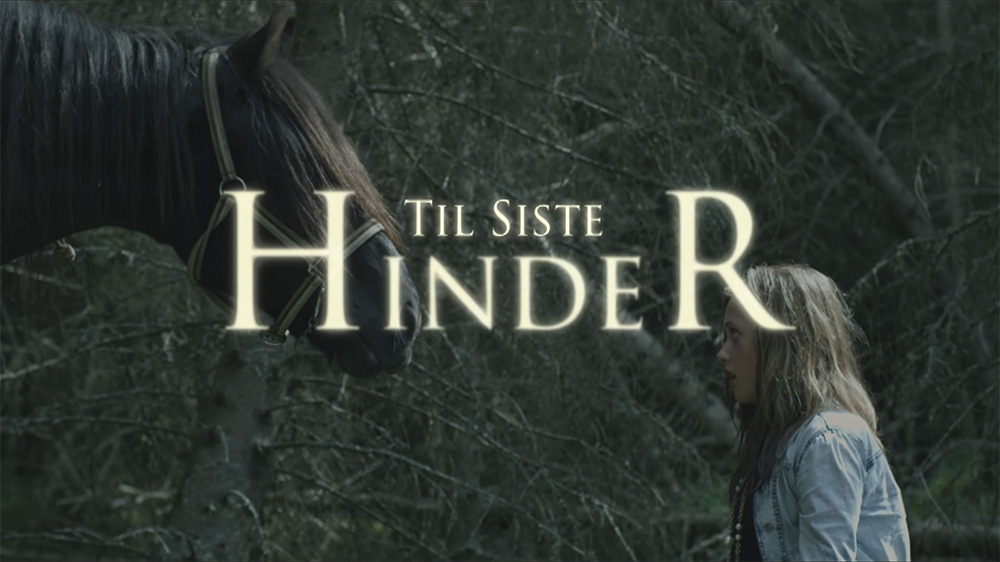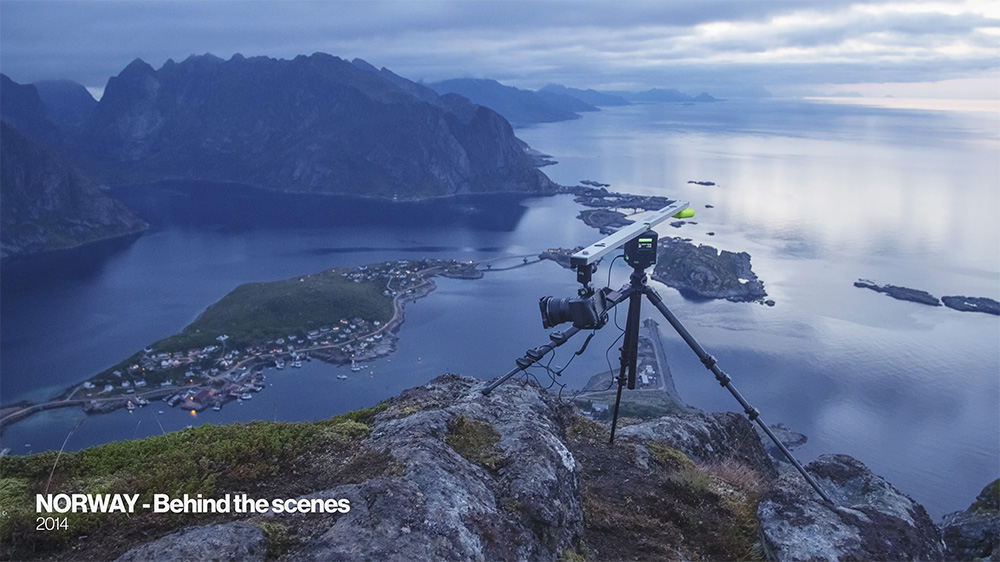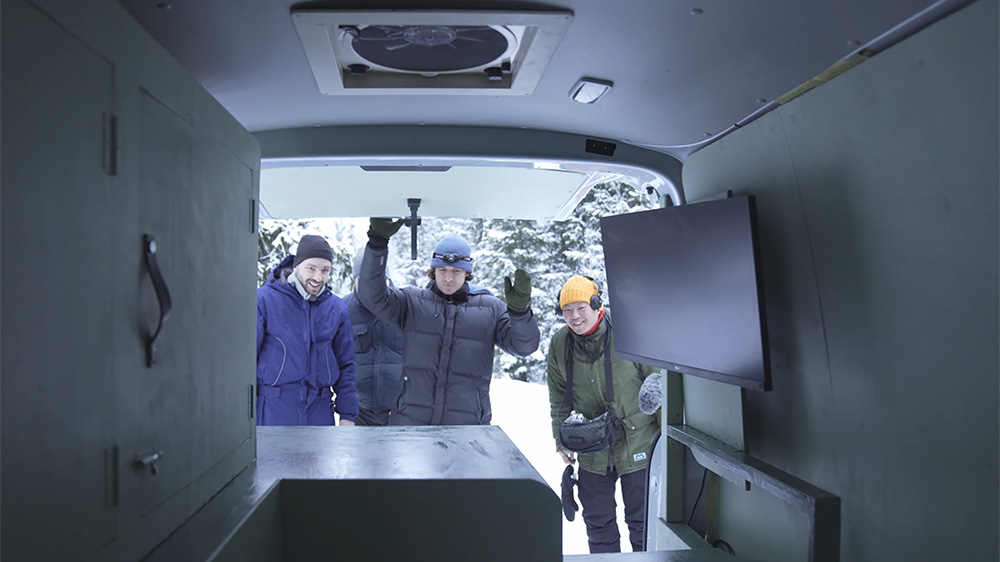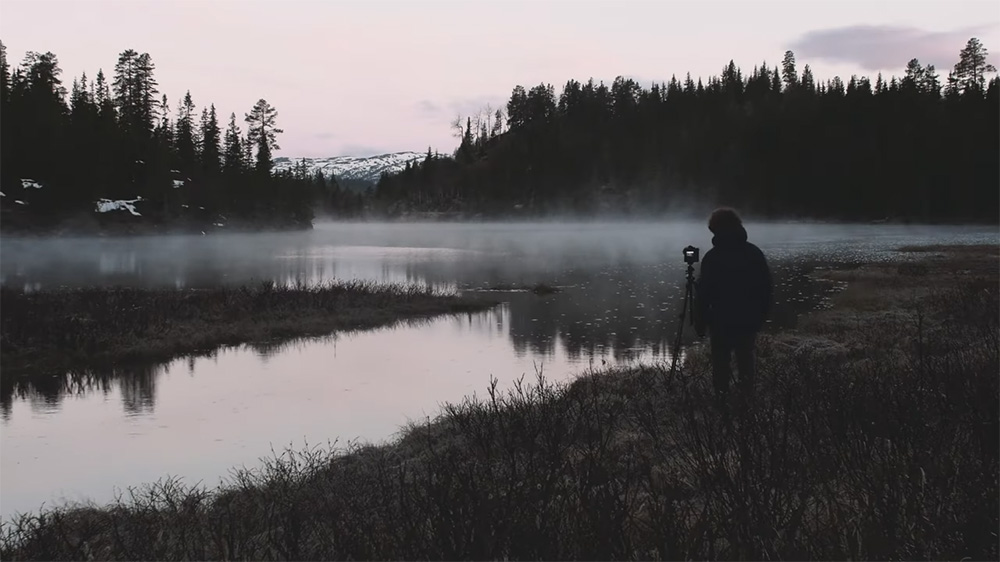Better films every fortnight. Subscribe to Syrp Lab YouTube.
Anders Øvergaard and Morten Rustad of VJUS create world class films from their base in Norway, all whilst sharing their journey on their YouTube channel. Chase sits down with this duo to find out how they manage to pull off both, and to talk DIY, risk-taking and steering clear of chasing trends.
So, how did you both get into filmmaking?
Anders: I think I started when I was around 12 years old, I was so interested in my father’s camera. I just made a lot of films with friends, and then attended film school for a year in northern Norway. Then I was asked to direct a feature film - by my teacher, actually. It was a horse movie, Til Siste Hinder. I’m not a horse person but I was asked to direct it and of course I said yes - I was 21 years old, just graduated from film school. It ended up winning the biggest award in Norway for the best children’s film. And this was a low budget movie!


What a way to start your career. So how did that lead to starting a film production company?
Anders: I realised that YouTube was so much fun. So I tried to implement the YouTube channel into a film production company and that’s where we are now.
And you, Morten?
Morten: My cousin and I started making videos at our cabin in the mountains. Really bad ones, of course. But I put some time-lapses into those videos, just like of the clouds or for some b-roll, and I found that this time-lapsing was really good. My camera was so bad and the videos were crap, but I could take photos with my still camera at quite high resolution, and this was ten or twelve years ago when time-lapsing was really taking off. So I created this Norway video in 2014 where I travelled around Norway for like four months during university summer break. That got quite popular and I got some jobs because of that and one of those was to do some b-roll for a documentary that Anders was directing. And that’s how I met Anders.
Timelapse is so technical, how did you learn to do it at a time when it wasn’t as accessible as it is now?
Morten: At the time I really wanted to make high-quality videos, and this was the only way I could do that. My first camera I think was like a Canon 450D, so I couldn’t even take videos. I spent a few years saving up to buy a Genie, and I couldn’t afford a slider so my dad and I built a slider out of a wardrobe thing. I created my whole first Norway video on that wardrobe slider. But time-lapse is also an area where I can be really creative with the technical side. Even though now I have a full slider set up, I like to play with it in different ways and put two sliders on top of each other and put the motor where it’s not supposed to be to get better movement. I really like those technical challenges.


That links in to your technical side as well, right, Anders? You created a steadicam company around the same time?
Anders: Yeah, I think maybe I was more into the technical stuff before. But when I started film school I was just directing for the first time. The first steadicam I made was in 2006, I think, because it was so expensive to buy them in Norway.
Morten: It’s the most comfortable steadicam I’ve ever used.
Anders: It’s when you have the creators themselves create products.


So you were definitely using your technical skills to create products that you couldn’t otherwise afford?
Morten: Yeah last year we created a film production van, which we made a video about. And right now we’re creating a big studio here which is going to be amazing. It’s kind of nice sometimes to get a break from filmmaking.
I hope you’re putting a big Cyc into your studio?
Anders: Yeah we used your documents! The carpenter was like putting up this Cyc and looking at them like, ‘Okay, how to do this!’. But they turned out really well.


You’ve kept up with sharing your journey on YouTube, whilst also managing a rapidly scaling agency. Was there anything you would have done differently?
Morten: We could have done a lot of things better, probably, in terms of organisation and planning and visions and all that, but we’ve been just too busy making films and we’ve grown too fast for our own good. I mean, why change that?
Does that add any pressure now that it’s not just you but five people to sustain and support each month?
Morten: It’s always a big risk trying to employ more people, but you’ve got to take those risks if you want to grow. It’s definitely quite scary.
Anders: I remember the first risk we took was getting the first office. I think it was only Morten and myself who decided we should go for this. The rest of the group was a bit, you know. It’s expensive, but if we don’t get any jobs at least we can use savings to cover things, and we’ll always solve it. You just have to take some chances and it was the best choice we made. Getting the first office was just perfect, having a meeting room, and a film studio.


How do you balance the YouTube channel side with having more work than is good for you?
Morten: All of us would love to do more YouTube because it’s a very free, creative space where we can do whatever we want. But we’ve been quite fortunate to have some good sponsors which has made it possible to work on YouTube as if it was just another commercial. So we could actually put quite a lot of time and resources into making more YouTube videos.
Is YouTube something you still put time into actively growing as a channel? Or have you left it to do its thing natively?
Morten: I think we are really bad YouTubers in a way. We make all the mistakes. It’s just because we don’t have too much time. We know that ideally we should put up a video like every week or something for the algorithms, but we’ve never really cared about that. It can go four months between our videos and then we can put out three in a row in two weeks and that’s just how it is.
Anders: I think it’s a bit refreshing for the audience to see someone who doesn’t like, follow the trends, or quickly upload a video. We take a lot of time on each video. And we know it’s not our main income so we don’t feel stressed about it, which is nice.
So it’s kind of making YouTube work for you as a production company, rather than doing what the algorithm is going to reward you for?
Morten: YouTube is never going to be our main source of income, anyway. It’s just a place for play and experiments.
Anders: And sometimes getting new clients, in a way.


Let’s circle back to time lapse. What are some of the mistakes people make when they’re trying to get into it themselves?
Morten: People are afraid to just do it, it seems like. They’re worried about their shutter or they overcomplicate things a bit. If people saw how I actually make time lapse - except for some of those crazy dolly movements and stuff like that - I think they would be shocked at how easy it is. I just put the thing in automatic and let it go, usually. You don’t have to buy all this stuff, just go out and do it, put it into aperture priority mode and let it run. The most important thing is just getting the best out of the camera and being in the right place at the right time. So you really need to spend a lot of time actually planning, hiking there, trekking there, whatever you want to do, and capturing a nice moment.


Is that kind of the same for film, Anders, or is it all technical?
Anders: It’s all about what happens in front of the camera. You have YouTube videos which go viral that have shaky handheld or 720p footage, but people still watch it because there’s something interesting happening in front of the camera. If you are too into the technical side, if that’s your main focus, you lose time on directing, on acting, on the characters and the story. I think people don’t regret the things they have done, but the things they haven’t done in their life. So if you are thinking about doing something, just do it.
Morten: and Anders have built an impressive filmmaker-first business, whilst also being generous with their sharing of knowledge and insight. But what sticks with us most is that they’ve made all of this work for them. Striking a balance between commercial necessities, but realising that chasing trends is less fulfilling to them than fundamentals, executed well.
Morten and Anders have built an impressive filmmaker-first business, whilst also being generous with their sharing of knowledge and insight. But what sticks with us most is that they’ve made all of this work for them. Striking a balance between commercial necessities, but realising that chasing trends is less fulfilling to them than fundamentals, executed well.
In Media Offline, we go deep with creatives who inspire us to improve our filmmaking and grow our careers. Like what you’re hearing? You can watch more episodes here.

